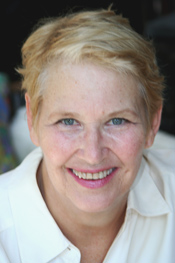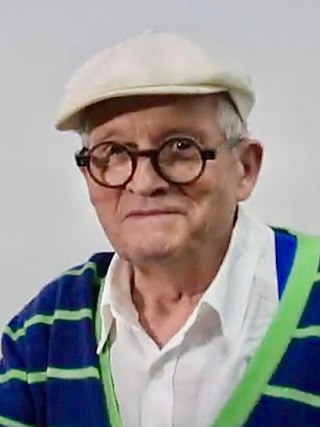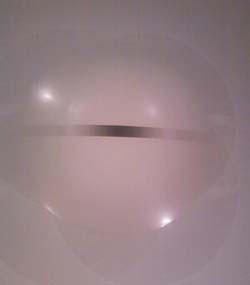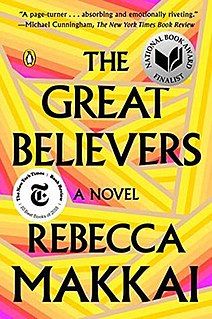
Johannes Vermeer was a Dutch Baroque Period painter who specialized in domestic interior scenes of middle-class life. During his lifetime, he was a moderately successful provincial genre painter, recognized in Delft and The Hague. Nonetheless, he produced relatively few paintings and evidently was not wealthy, leaving his wife and children in debt at his death.

Oliver Wolf Sacks, was a British neurologist, naturalist, historian of science, and writer. Born in Britain, Sacks received his medical degree in 1958 from The Queen's College, Oxford, before moving to the United States, where he spent most of his career. He interned at Mount Zion Hospital in San Francisco and completed his residency in neurology and neuropathology at the University of California, Los Angeles (UCLA). After a fellowship at the Albert Einstein College of Medicine, he served as neurologist at Beth Abraham Hospital's chronic-care facility in the Bronx, where he worked with a group of survivors of the 1920s sleeping sickness encephalitis lethargica, who had been unable to move on their own for decades. His treatment of those patients became the basis of his 1973 book Awakenings, which was adapted into an Academy Award-nominated feature film in 1990, starring Robin Williams and Robert De Niro.

Annie Dillard is an American author, best known for her narrative prose in both fiction and non-fiction. She has published works of poetry, essays, prose, and literary criticism, as well as two novels and one memoir. Her 1974 work Pilgrim at Tinker Creek won the 1975 Pulitzer Prize for General Nonfiction. From 1980, Dillard taught for 21 years in the English department of Wesleyan University, in Middletown, Connecticut.

David Hockney is an English painter, draftsman, printmaker, stage designer, and photographer. As an important contributor to the pop art movement of the 1960s, he is considered one of the most influential British artists of the 20th century.

Robert W. Irwin is an American installation artist who has explored perception and the conditional in art, often through site-specific, architectural interventions that alter the physical, sensory and temporal experience of space.
New Journalism is a style of news writing and journalism, developed in the 1960s and 1970s, that uses literary techniques unconventional at the time. It is characterized by a subjective perspective, a literary style reminiscent of long-form non-fiction. Using extensive imagery, reporters interpolate subjective language within facts whilst immersing themselves in the stories as they reported and wrote them. In traditional journalism, however, the journalist is "invisible"; facts are reported objectively.
The New York Institute for the Humanities (NYIH) is an academic organization founded by Richard Sennett in 1976 to promote the exchange of ideas between academics, writers, and the general public. The NYIH regularly holds seminars open to the public, as well as meetings for its approximately 250 Fellows. Previously affiliated with the New York University, in 2021, the institute announced its partnership with the New York Public Library.
Henry Geldzahler was a Belgian-born American curator of contemporary art in the late 20th century, as well as a historian and critic of modern art. He is best known for his work at the Metropolitan Museum of Art and as New York City Commissioner of Cultural Affairs, and for his social role in the art world with a close relationship with contemporary artists.

The Chicago Humanities Festival is a non-profit organization which hosts an annual series of lectures, concerts, and films in Chicago. There are two seasons each year, including a spring festival from April through May, and a longer fall festival from September through November. The festival was started in 1989 by the Illinois Humanities Council and became an independent organization in 1997. Each year of programming is connected to a broader theme and covers a wide variety of topics in the arts, politics and society, and science and technology.
The Chicago Tribune Heartland Prize is a literary prize created in 1988 by the newspaper The Chicago Tribune. It is awarded yearly in two categories: Fiction and Nonfiction. These prizes are awarded to books that "reinforce and perpetuate the values of heartland America."

Jill Lepore is an American historian and journalist. She is the David Woods Kemper '41 Professor of American History at Harvard University and a staff writer at The New Yorker, where she has contributed since 2005. She writes about American history, law, literature, and politics.
Jo Ann Beard is an American essayist.

Ginger Strand is an American author of nonfiction and fiction. Her 2005 debut novel Flight was adapted from several of her short stories. Her published books of non-fiction include Inventing Niagara: Beauty, Power, and Lies in May 2008, Killer on the Road: Violence and the American Interstate in 2012, and The Brothers Vonnegut: Science and Fiction in the House of Magic in 2015. She has published articles in The New Yorker, The New York Times,Pacific Standard,Tin House, and The Believer, among others. She was a 2009 New York Foundation for the Arts fellow in nonfiction.

Elena Herzog is a Russian-American visual artist and photographer.

Robert Irwin is associated with the Modern Art movement and is best known for his Installation art. Philosophers influence Irwin’s work, such as Maurice Merleau-Ponty’s ideas of engagement and interaction between the physical world and people. Irwin reflects these ideas through his disc installations. From 1967-1969 he worked on this installation, which consists of convex discs made of metal and plastic. The discs hang on a wall and are illuminated by floodlights to create the illusion of no edges. It is a play on light, dark, shadows, and the space in which the discs lie in.

David Foster Wallace (1962–2008) was an American author of novels, essays, and short stories. In addition to writing, Wallace was employed as a professor at Illinois State University in Normal, Illinois, and Pomona College in Claremont, California.

Laura J. Snyder is an American historian, philosopher, and writer. She is a Fulbright Scholar, is a Life Member of Clare Hall, Cambridge, was the first Leon Levy/Alfred P. Sloan fellow at The Leon Levy Center for Biography at The Graduate Center, CUNY, and is the recipient of an NEH Public Scholars grant. She writes narrative-driven non-fiction books including, most recently, Eye of the Beholder: Johannes Vermeer, Antoni van Leeuwenhoek, and the Reinvention of Seeing, which won the Society for the History of Technology's 2016 Sally Hacker Prize. In 2019, Snyder signed a contract with A. A. Knopf to author a biography of Oliver Sacks, based on exclusive access to the Sacks archive. Snyder also writes for The Wall Street Journal. She lives in New York City, where she was a philosophy professor at St. John's University for twenty-one years.

The Great Believers is a historical fiction novel by Rebecca Makkai, published June 4, 2018 by Penguin Books.

Jeannie Vanasco is an American writer. She is the author of Things We Didn't Talk About When I Was a Girl, a memoir about her former friendship with the man who raped her, and The Glass Eye, a memoir about her father and his deceased daughter, Vanasco's namesake. She teaches English at Towson University.

Michael Light is a San Francisco-based photographer and book maker whose work focuses on landscape, the environment, and American culture's relationship to both. He is known for aerial photographs of American western landscapes collectively titled "Some Dry Space: An Inhabited West" and for two archival projects focused on historical photographs of the Apollo lunar missions and U.S. atmospheric nuclear detonation tests, represented by the books Full Moon (1999) and 100 Suns (2003), respectively. Los Angeles Times critic Leah Ollman characterized his work as "largely about what we consider ours, how we act on that assumption, and what the visual manifestations of those claims look like ... [It] seduces and troubles in shifting measure."















